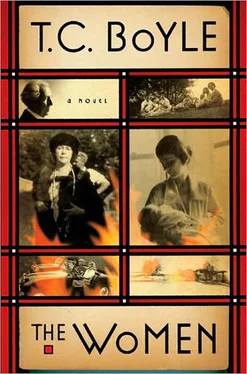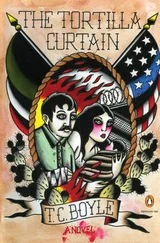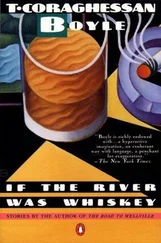At first, Wrieto-San had paid carpenters, stonemasons and farmhands from the surrounding villages at the rate of two dollars a day, plus meals, to carry forward the work on the Hillside School, which was then being converted to residences for the apprentices, as well as a theater and a new studio removed from the main house, but in this fourth year of the Depression, he’d had to let them go because he was, as always, flirting with bankruptcy. In fact, the only viable project on the boards at the time was the Willey house, and so, when we weren’t out in the fields or hammering away at Hillside, there was precious little to do in the drafting room but copy out Wrieto-San’s old designs by way of exercise and instruction.
Typically, our days would begin with the six-thirty bell followed by breakfast at seven. We ate communally, but for Wrieto-San and Mrs. Wright, who took their meals in a private dining room attached to the larger one reserved for the apprentices, and though we sometimes lacked for meat there were eggs, flapjacks and enough oatmeal to ballast a ship of the line (Wrieto-San believed firmly in the virtues of oatmeal, both as the body’s fuel and its scouring pad). In later years, once Svetlana graduated from musical prodigy to impresario, breakfast would be followed by half an hour’s choral practice under her direction, but in the fall of 1933, we went straight to work. There was an afternoon break from twelve to one-thirty, then work till five and dinner at six. On Saturday evenings we were all required to dress for dinner, after which those amongst us with musical abilities — I was not one of them — would perform for the assembled apprentices, Wrieto-San and his family and any prospective clients or other guests who happened to be in attendance. Sunday-morning breakfast was the reward after a long six-day week, and here there would be preserves, bacon, ham, eggs, biscuits and pie, and then there was the formal Sunday dinner in the incomparable living room, and we were all able to bask in the fully realized expression of organic architecture at its apex. Ten o’clock was lights out, enforced by the shutting down of the hydroelectric plant.
Of course, the rigors and isolation of country living weren’t for everyone, and a number of apprentices left after the first year, including four of the five women. The one who stayed, Esther Grunstein, an almost super-naturally homely girl of twenty-two or — three who favored sacklike dresses and who had oversized hands and a frizz of hair that made it seem as if she was wearing a bonnet even when she wasn’t, was rumored to be available to any of the men for a price arranged on a sliding scale according to her whim. She wouldn’t — and I had this from Herbert Mohl—“go all the way,” but she would perform what were called hand-jobs, and if she was in the mood and an apprentice had the money, fellatio. My relations with her were strictly collegial, I should say, though our isolation, combined with the fresh air and exercise, certainly kept the sap rising in us all and eventually, in extremis, even she began to look good to me. But then it was October and a squad of new apprentices made their appearance, suitcases and freshly drawn checks in hand, and we were all relieved to discover that there were four women among them. More significantly, one of those women was Daisy Hartnett.
On the day Daisy arrived I was in the studio in the main house, working with Herbert and Wes and some of the others on the preliminary drawings for a newspaper plant in Oregon that would never be built, when the phone rang in Wrieto-San’s office. We could all hear the phone ringing quite plainly, just as we could hear every word Wrieto-San spoke into the mouthpiece as he wooed clients and begged off creditors, since his office was separated from the studio only by means of the high stone vault in which he kept his most precious Japanese prints. There was the click of the phone lifted from its cradle and then Wrieto-San’s mellifluous tenor singing over the fractured silence. “Who?” he said. “Apprentices? At the station, did you say?”
In the next moment, Wrieto-San emerged, as he did a hundred times a day to work over our drawings, throw a log on the fire, seize on one or another of us to run an errand, fill a gap in the kitchen or trot out to the fields to refresh the wildflowers in the ranks of vases spread throughout the house. We all stood, as we did every time he entered the studio, no matter how deeply engaged we were in the work at hand. He went straight to my desk. “Tadashi,” he said, leaning in close with a fresh pencil in his hand, smelling of graphite and cedar shavings, “I’m going to need you to run down to the station and fetch two of the new apprentices. Just arrived.” He paused, looking from me to the drawing and back again. “The Stutz is in good working order, I trust?”
“Yes, Wrieto-San,” I said, fumbling out of the chair to give him an abbreviated bow. “We’ve managed to repair the front fender where it, uh, and the tire too—”
The car — Wrieto-San had never ceased his criticism of it — had been subjected to some fairly rough usage over the course of the past year, degenerating from the sporty road machine I’d plucked off the automobile lot to a harried and dilapidated farm vehicle. The front wheels were out of alignment, the tires patched so many times they were like patches themselves and the body seemed slowly to be taking on a new shape altogether. And the paint scheme was no longer pit-of-hell black and canary yellow, but rather a uniform Cherokee red. Cherokee red was Wrieto-San’s totemic color and he insisted that all his vehicles — all the vehicles at Taliesin, whether they were properly his or not — should be graced with this hue. An obliging garage man in Madison had done the trick for me, at my own expense, much to Wrieto-San’s satisfaction.
He was already plying his eraser, making wholesale changes to the drawing I’d spent the entire morning on. He barely glanced up. “Two of them. Greiner and Hartnett, females.”
I didn’t know what to expect and I didn’t want to get my hopes up. I wasn’t exactly shy—“reserved” is the word I would have chosen — but there was almost a hundred percent certainty (Greiner, Hartnett, females ) that these women would be Caucasian, as was virtually everyone else in the lily-white state of Wisconsin. Not that Wrieto-San didn’t surround himself with an international set — the paid draftsmen we succeeded were from Japan, Poland, Switzerland and Czechoslovakia, and one of my fellow apprentices, Yen Liang, was Chinese — but the Fellowship was otherwise exclusively American. And these were American girls. And American girls generally observed the taboos against miscegenation. I knew this. We all knew this. What choice did I have but to be reserved?
Unfortunately, it was raining. Hard. I could certainly have made a better impression in the Bearcat with the top down, but now we would be forced to wedge ourselves into the steaming interior, which smelled — again, unfortunately — as if the chickens had been roosting in it, and maybe they had. And then there was the problem of the front drive. Every time it rained its permeable surface was transformed into an Amazonian mire, and so it was now. Twice the rear wheels sank to the frame and I was forced to go back up to the house for a shovel to extricate them. By the time I reached the road my shoes were no longer shoes but slick glistening sculptures of varicolored mud, my jacket was soaked through and the cuffs of my trousers were as limp as the hides of two freshly skinned squirrels. I fought the clutch, rocketed through pit, puddle and chasm and pulled up in front of the station just over an hour after I’d left the drafting room.
Dimly, through the slash of rain and the fogged-over windshield, I could make out two figures huddled on a bench under the eaves of the depot. Female figures. Blouses, hats, the swell of a feminine calf against the crease of a skirt. They were flanked by shadowy parcels, hatboxes, swollen suitcases — and a single steamer trunk the size of a grand piano. Neither of them moved. I shut down the engine and stepped gingerly into the street, which was awash in braided ripples of dun-colored water. The pounding of the rain flattened the hat to my head even as the outer layer of mud was prised from my shoes and carried on down the street in two black dissolving crescents.
Читать дальше












